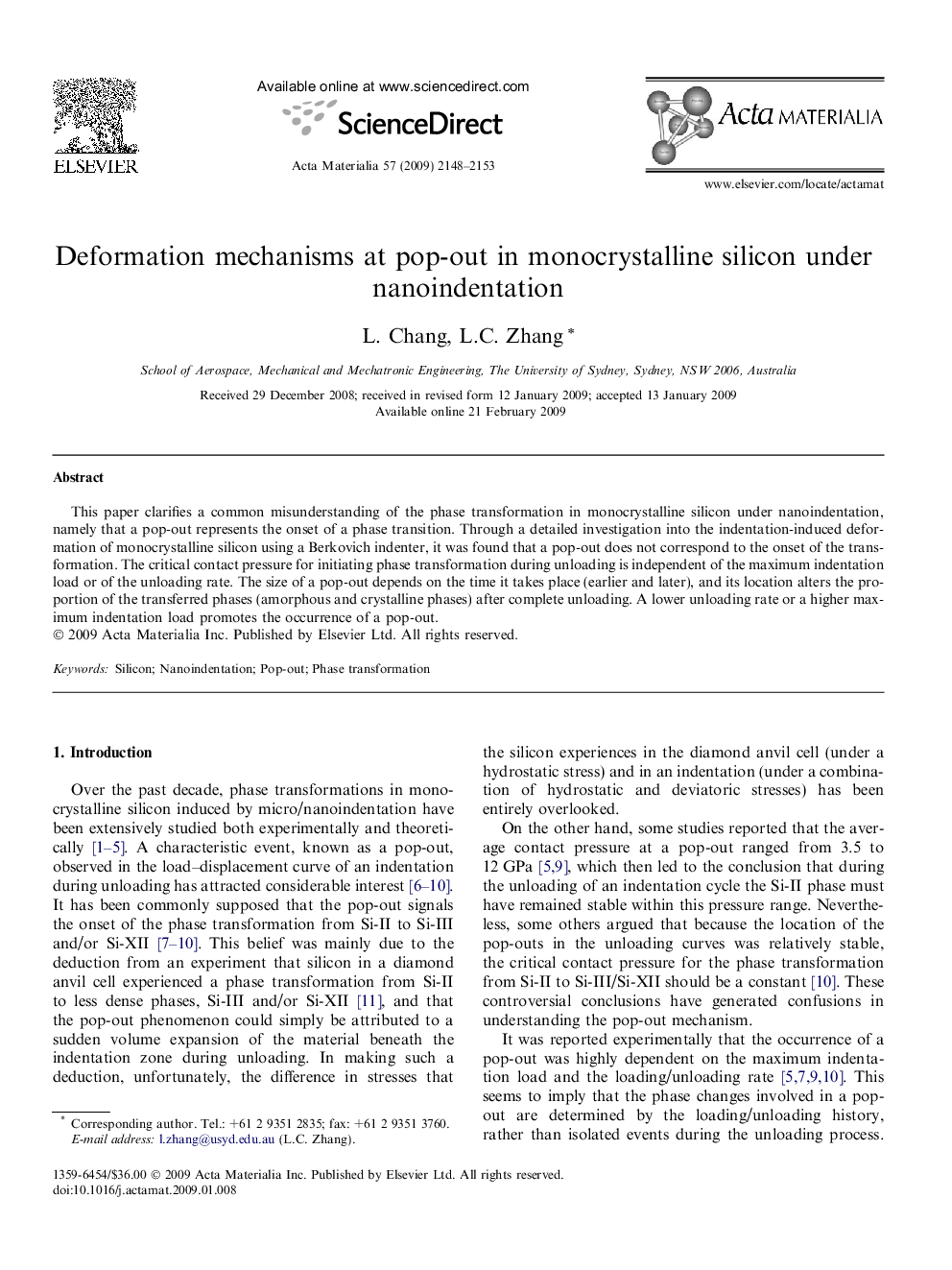| Article ID | Journal | Published Year | Pages | File Type |
|---|---|---|---|---|
| 1448596 | Acta Materialia | 2009 | 6 Pages |
This paper clarifies a common misunderstanding of the phase transformation in monocrystalline silicon under nanoindentation, namely that a pop-out represents the onset of a phase transition. Through a detailed investigation into the indentation-induced deformation of monocrystalline silicon using a Berkovich indenter, it was found that a pop-out does not correspond to the onset of the transformation. The critical contact pressure for initiating phase transformation during unloading is independent of the maximum indentation load or of the unloading rate. The size of a pop-out depends on the time it takes place (earlier and later), and its location alters the proportion of the transferred phases (amorphous and crystalline phases) after complete unloading. A lower unloading rate or a higher maximum indentation load promotes the occurrence of a pop-out.
